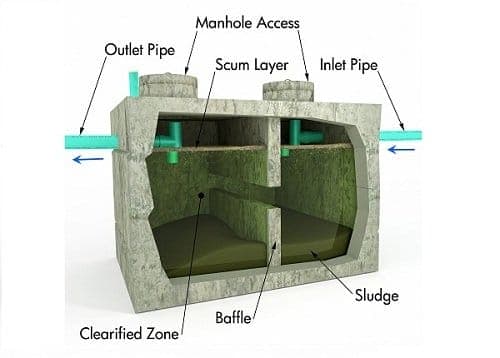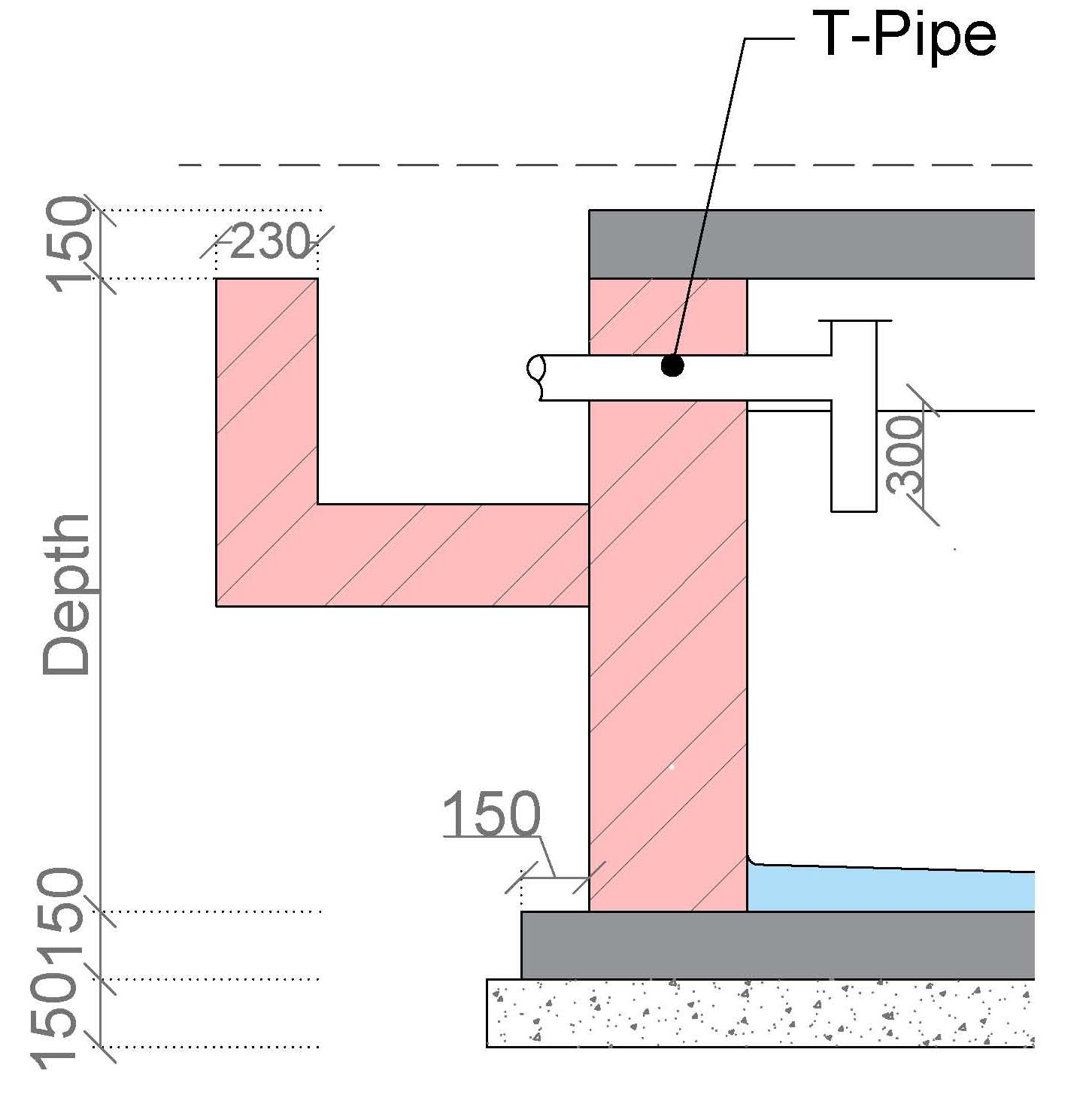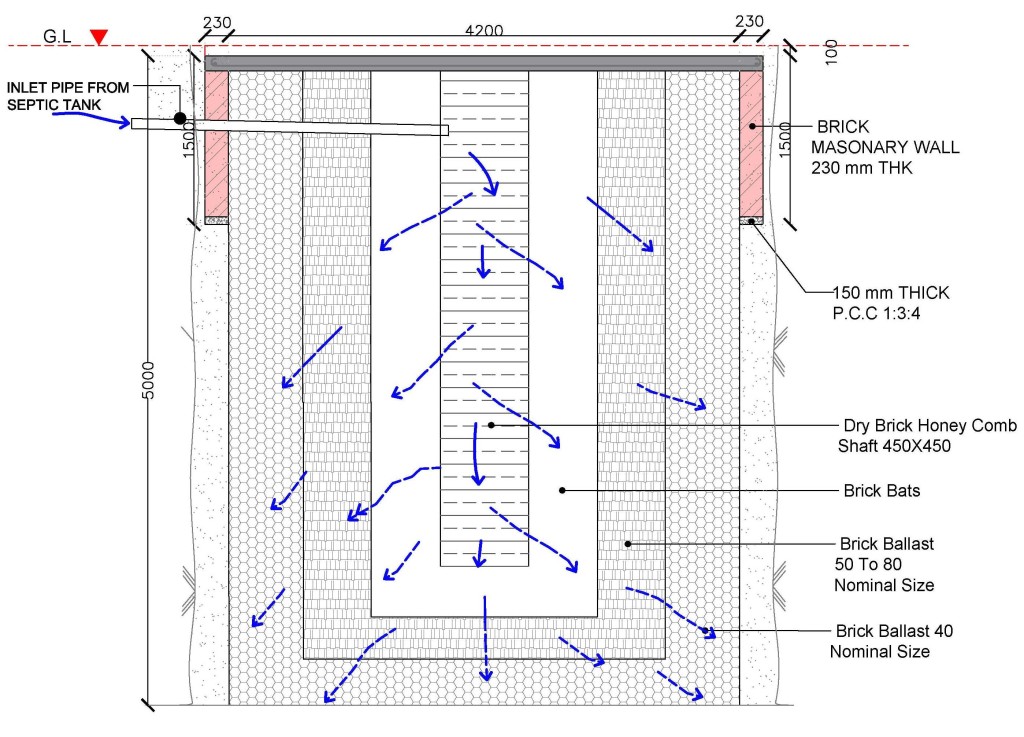
Septic Tank
Septic tanks are ordinarily sized to provide a 24 hour retention time for average daily flow. Sewage flow enters in to septic tank through T pipe and pipe immersed in to the liquid. The inlet pipe is kept higher than outlet. By providing T shaped pipe it will not create turbulence when raw sewage flow enters in to septic tank.

Mainly two treatment processes occur in Septic Tank.
01. Mechanical process
02. Biological Process.
Mechanical Process
The Mechanical process in septic tank is nothing but Sedimentation. Sedimentation is a physical waste water treatment process using gravity to remove suspended solids from waste water. Solid particles of moving waste water may be removed naturally by sedimentation in the still waste water of tanks

Biological Process
Biological process in septic tank is anaerobic of settled solids and liquid. And it starts when fresh wastewater and active sludge contact and compete with each other in the septic tank. Biological process is optimised by rapid and intensive contact between fresh inflow and sludge, particularly when the flow is turbulent.
In domestic wastewater, a heavy scum accumulates and it must be removed regularly. It does not harm the treatment process as such, but it does occupy tank volume.
The septic tank outlet is also provided with T-pipe, so it prevents floating scum and sewage from flowing out of the tank. Outlet of septic tank is connected to soak pit for further treatment.

A cleaning or desludging of septic tank is desirable half yearly or yearly. For economy and small domestic septic tanks may desludged once in two years. Frequent cleaning or desludging affects the anaerobic action in the tank. Normally, the tanks are cleaned when sum of the depth of the scum and the sludge is observed to exceed half the depth of the tank. The suspended solid removal rate drops drastically when accumulated sludge fills more than 2/3 the depth of the tank. A portion of sludge not less than 25 mm in depth should be kept at the septic tank bottom which acts as the seeding material for the fresh deposits, helping in biological process.
Soak Pit
Water coming out from septic tank still contains organic materials and it needs further treatment. The water coming out from septic tank is called grey water. And it’s further processed in Soak Pit.
Soak pit is a covered permeable/porous walled chamber that allows water to slowly get soaked into the ground. A layer of sand, brickbats and fine gravel is placed in it to help disperse the flow. The soak pit construction will be difficult where water table is very high in a very water logged area, as required percolation would not take place. Depth of soak pit should be between 1.5 to 4m. Soak pit depth should be kept 1.5 m above the ground water table.

The area of the soak pit will depends on
01. Rate of absorption of water by soil per day.
02. Quantity of waste water to be treated.
The waste water from septic tank percolates in to soil via soak pit. Small particles are filtered out by soil matrix and organics are digested by micro-organism.
Soils with absorptive properties are best for soak pit location.
































